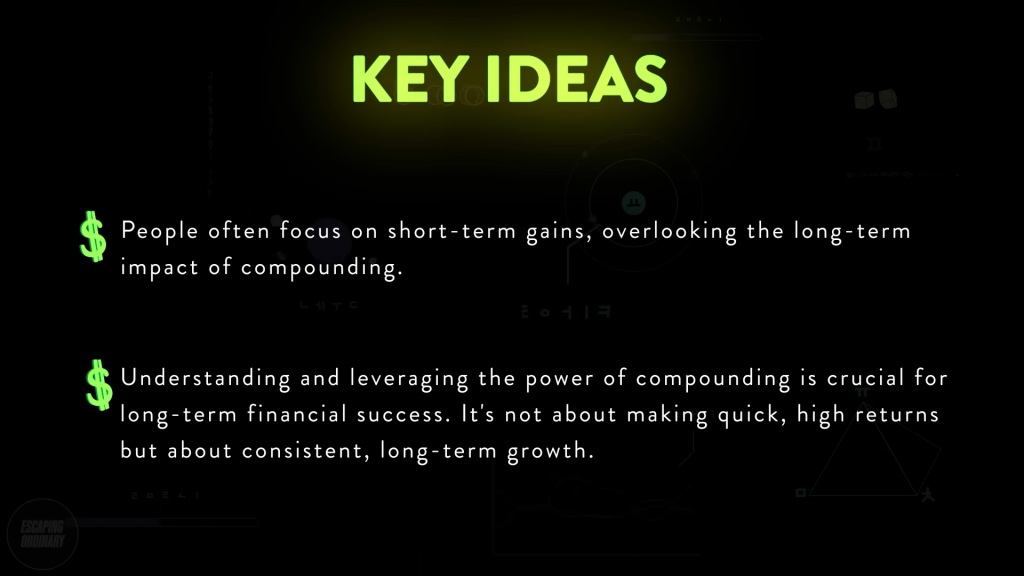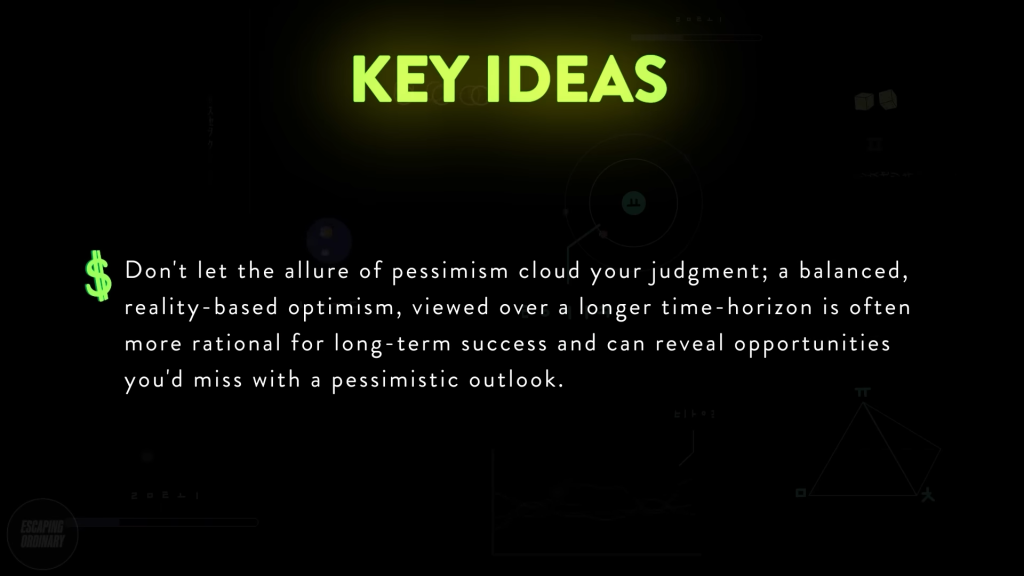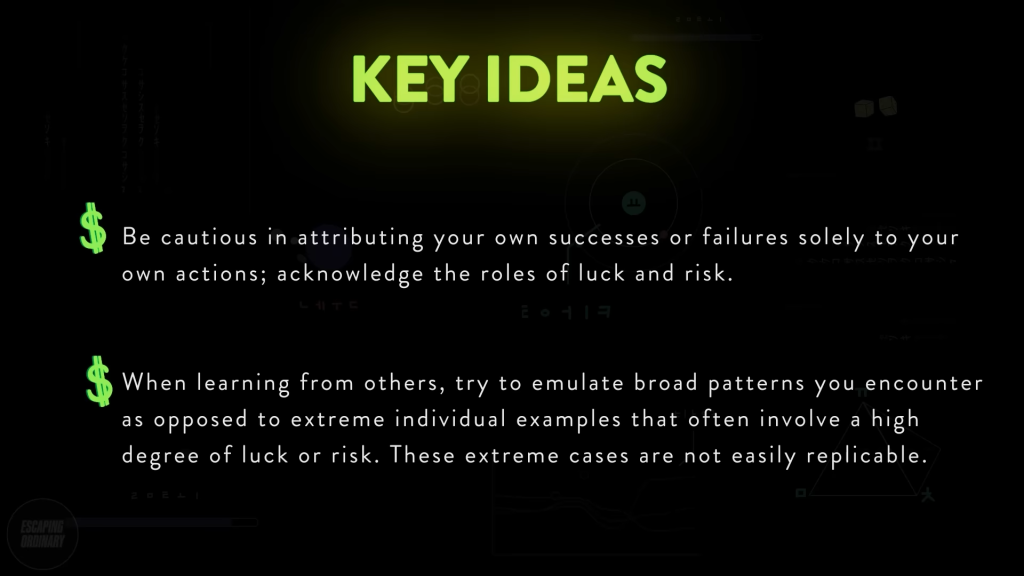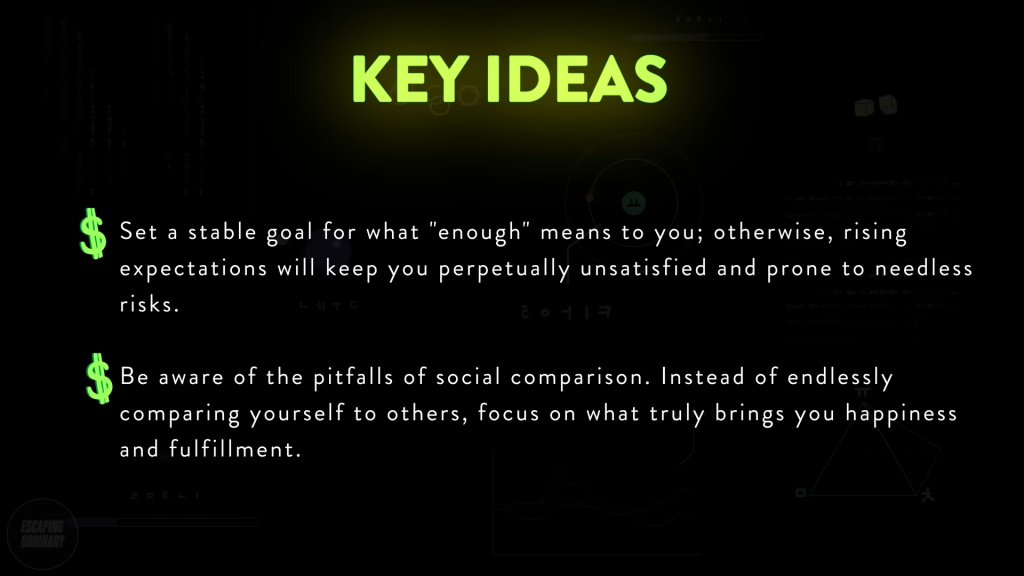The Psychology of Money In-Dept Book Summary
Money. Some have it. Some Don’t. Some have mastered it. Most are still chasing it. You may think of money as just numbers, spreadsheets, and math.
Or An equation that needs to be solved. But The real financial decisions are made away far from calculators, around dinner tables – with ego, pride, fear, and personal history.
The true nature of money is the dance between the cold arithmetic of a spreadsheet and human nature. When it comes to money, we are complicated creatures, and financial success is not so much about how much you know but how you behave.
There are hundreds of articles about the Psychology of money book summary, but none cover all the essential learnings from this book. So, this is going to be an in-depth book summary of the book. If you are searching for a short 500-600 word summary, then of course, there are many websites providing it, but you will lose the essence of the book.
So, if you are interested in the book and want to know everything the author shared in the book, stay with me.
1. Financial DNA
We all come from different generations, with parents earning different incomes and holding different values, living in various parts of the world, born into different economic environments with varying incentives and varying opportunities; we all have very different experiences towards money. Take, for example, the stock market and inflation.
People born in 1970 saw an almost tenfold increase in the S&P 500 during their teens and 20s, leading most to have a positive view of the stock market and a higher inclination to invest.
People born in 1950 saw the stock market go nowhere in their teens and 20s, leading to a more negative view of the stock market and less inclination to invest.
People born in the 1960s experienced significant inflation during their teens and 20s, leading to a higher awareness and more negative view of inflation and its effects.
People born in 1990 experienced relatively low inflation during their lifetime, leading to less concern and awareness of its effects.
A person’s experience with the stock market and inflation during their formative years greatly shapes their attitudes towards investing and financial decision-making.
People justify every financial decision they make based on the information they have at that moment and their mental model of the world, which has been passed onto them by their parents and is shaped by their unique life experiences.
Although they can be misinformed, lack information, or make bad decisions, their actions make sense to them in that moment and align with their own personal story. According to Housel, “People do some crazy things with money. But no one is crazy.”
We all have unique worldviews, and since there is no universally correct way to manage money successfully, none of us are crazy.
WE MAKE FINANCIAL DECISIONS BASED ON OUR PERSONAL LIFE EXPERIENCES AND OUR WORLDVIEW.

2. compound king
Warren Buffett is undoubtedly considered one of the greatest investors of all time. What is staggering is that $81.5 billion of Warren Buffet’s $121.4 billion net worth was earned after he reached his mid-sixties.
Housel explains that “few pay enough attention to the simplest fact: Buffett’s fortune isn’t due to just being a good investor, but being a good investor since he was literally a child.”
As a result of investing from the early age of 10, Buffet was able to harness the power of compounding.
Let’s say you invest $1,000 at an interest rate of 8%. Your initial investment would earn you $80 after one year. If you compounded your total of $1080 at 8% interest the next year, you would now earn $86.4. You’ve earned money on your initial investment and the interest you earned on the principal.
An investment compounded over time gains interest from the original investment, and the interest generated on top of the original investment.
The counterintuitive nature of compounding makes many of us not realize how extreme the results can be. Compounding, however, can help you earn more money over time. Warren Buffett began serious investing at age ten and had a net worth of $1 million by age 30.
Let’s imagine an alternate reality: Warren Buffet behaved more like most young men in their 20s and used much of his early income on traveling and a few nice cars.
If he started with a net worth of $25,000 at age 30 and retired at 60 but continued to generate amazing average returns of 22% annually – his net worth today would be around $11.9 million (far less than his actual net worth today of $121.4 billion).
Warren Buffett’s financial success can be attributed to the financial base he built in his early years and his longevity in investing.
His skill is investing, but his secret to success is time and the power of compounding. Consider this from another perspective. The richest investor of all time is Warren Buffett. However, In terms of average returns, he is not the greatest.
Jim Simons, for instance, is a hedge fund manager who has compounded money at a staggering 66% annually since 1988. A much higher rate than Buffet. However, the net worth of Simons is 21 billion – which is 75% less than Buffett’s. How is this possible? According to Housel, this is because Simons couldn’t find his stride in investing until he was 50.
Effectively giving him less than half as many years to compound as Buffett. Housel estimates that if he had invested over a time frame as long as Buffett, his net worth today would be….. “sixty-three quintillion nine hundred quadrillion seven hundred and eighty-one trillion seven hundred eighty billion seven hundred and forty-eight million one hundred sixty thousand dollars.” ($63,900,781,780,748,160,000) It’s important not to underestimate the power of compounding. No matter how counterintuitive the compounding results may seem, they should never be ignored.

3. Pessimism and money
Optimism is a belief that the odds of a good outcome are in your favor over time, even if there are setbacks, but when it comes to money, we all have a bias toward pessimism that we hold dear in our hearts.
Looking back, however, things have generally improved over the years. So what about pessimism that we are inclined to embrace rather than optimism? The answer is that GOOD THINGS TAKE TIME and don’t happen overnight.
Money is a subject that attracts pessimism for a variety of reasons. Let’s start with the fact that money matters to all of us.
We’re more likely to pay attention when we hear about something bad happening in the economy. For example, a 40% decline in the stock market over six months will likely attract attention immediately and may even attract government intervention.
However, The incremental nature of a 140% gain over six years can go largely unnoticed. Every year, half a million American lives are saved by the progress of medicine over the last 50 years. Slow progress attracts less attention than quick, sudden losses such as terrorism, plane crashes, and natural disasters.
There are many overnight tragedies but few overnight miracles. To be practical, we don’t have to be pessimistic. Despite setbacks, we can hold onto the belief that the odds of a positive outcome are in our favor over time. When watching the news highlighting a stock market crash, economic woes, or other money problems, remember that things tend to improve over time.

4. Two Forgotten Elements.
In 1968, there were roughly 300 million high-school-age people in the world, and of those 300 million, 300 students attended a small school in Seattle called Lakeside.
Lakeside was the only high school in the world at the time that had a professor with the foresight to lease a computer, the Teletype Model 30.
This was no ordinary computer, it was advanced for the time and the type of computer that even Graduate students didn’t have access to.
And for one lucky student at Lakeside, this would change everything. That student was Bill Gates. From 300 million to 300.
In 1968, there was roughly a one-in-a-million chance of being a high school student with access to a computer. Bill Gates and his schoolmate Paul Allen would go on to create Microsoft together.
Even as a teenager, Gates showed exceptional intelligence, hard work, and a vision for computers unlike anyone else.
But going to Lakeside also gave him a one-in-a-million competitive advantage and a head start. And Gates is not shy about this; in 2005, he said, “If there had been no Lakeside, there would have been no Microsoft,” What is not often mentioned in the early Microsoft story was a third member of this gang of high-school computer prodigies.
Kent Evans. Just as intelligent, just as visionary. Kent could very well have been one of the founders of Microsoft, Alongside Gates and Allen.
However, that would never happen. A mountaineering accident took Kent’s life before he graduated high school. The odds of a high school student being killed in a mountaineering accident are around one in a million.
Just as the extremely rare stroke of luck would propel Bill Gates and Paul Allen to great success. Kent Evans would experience an extremely rare event and an encounter with what Housel calls the close sibling of luck, risk.
Luck and risk are like the wind and the waves that determine the course of a sailboat. The sailor can control the rudder and the sails, but ultimately the direction and speed of the boat are influenced by external factors that cannot be fully predicted or controlled.
Pursuing success is full of twists and turns, and the role luck and risk play in shaping our lives is an important perspective to remember.
Understanding that Success is a complex combination of factors, including both talent and luck can help us approach our own financial decisions with greater humility and perspective.
5. The Key to Happiness
People want to become wealthier to make themselves happier. Still, according to Housel, “ the key to happiness is the ability to do what you want, when you want, with who you want, for as long as you want” The pursuit of material wealth has led to many people working harder and giving up more control over their time, despite being richer than ever before.
However, studies show that having control over your life is the most dependable predictor of positive feelings of well-being, more than your salary, house size, or career prestige.
Ultimately, controlling your time is the highest dividend money pays. Pursuing money without valuing time is like filling a bucket with a hole. No matter how much water you pour in, it leaks out. Similarly, no matter how much money you accumulate, it won’t bring lasting happiness if you don’t have control over your time and can’t enjoy the fruits of your labor.

6. Tail Events
Heinz Berggruen, a man who fled Nazi Germany and settled in America, became one of the most successful art dealers ever.
He collected massive amounts of art, including works by famous artists like Picasso, Klee, and Matisse. 2000 he sold part of his collection for over 100 million euros. What was his secret to acquiring so many masterpieces? Was it skill? Was it luck?
According to Horizon, a Research firm, great investors buy vast quantities of art and hold onto them for a long period of time. They waited for a few of those paintings to become well-known and worth a lot of money, even though most of the paintings they bought were not worth much.
In other words, it’s not always being right but having a diversified portfolio and waiting for a few winners to emerge.
Perhaps 99% of the works someone like Berggruen acquired in his life was of little value. He could be wrong most of the time, But that doesn’t particularly matter if the other 1% turns out to be the work of someone like Picasso.
These events are known as long tails. When a small number of events can account for the majority of outcomes. The long tails of Berggruen’s art collection led to his ultimate fortune.
The story of Berggruen teaches us a valuable lesson about investing; this long-tail concept also applies to many aspects of business and investing.
The obvious example is Venture Capital. Most of the startups in a VC fund will fail and lose money for the fund, but all they need are a few outlier startups that make 20x + returns to make up for losses.
Take Amazon, for instance. In 2018, it drove 6% of the return on the S&P 500, even though it is just one company.
If we look inside Amazon. Its growth was largely driven by two tail events: Amazon Prime and Amazon Web Services. These two products alone made up for Amazon’s less successful experiments, such as the Fire Phone or travel agencies.
After the disastrous release of the Amazon Fire phone, rather than apologizing to shareholders, Jeff Bezos said: “If you think that’s a big failure, we’re working on much bigger failures right now. I am not kidding. Some of them will make the Fire Phone look like a tiny little blip”
Bezos understands that making mistakes and failing with most products is OK if the process creates the 1% of Tail event products that drive everything.
Tail events are mostly unintuitive and hidden from us because we only see the finished products and not all the failures along the way that led to that finished product.
In the book, Housel uses a real-life example of a stand-up comedian. When you watch the Netflix special, you tell yourself this comedian is amazing.
You don’t see all the trial-and-error failed jokes that the comedian tried out in small clubs nationwide before doing the special.
The Netflix special is the 1% compendium of all the tail event jokes that made people laugh. 99% of the jokes along the way were probably just OK.
When it comes to investing, Even though long tails are prevalent, most of us ignore them. When things go wrong, we tend to overreact.
As soon as you accept that tails drive everything in business, investing, and finance, you realize many things may go wrong, fail, or fall apart. Remember: Out of the nearly 500 stocks Warren Buffet has picked, only ten have made most of his money.
Good Stock pickers will only be right half of the time. Good leaders will only make good decisions half of the time.
The fact that you might be wrong sometimes doesn’t mean that things won’t work out over time. Ultimately, the outcome can be determined by only a small number of events.

7. True Wealth VS Being Rich
It’s important to understand the difference between wealth and wealth. Richness is about your current income and what you own, while wealth is about the financial assets you have yet to spend.
True wealth isn’t what you see but what you don’t. It’s easy to assume that someone driving a Lamborghini is wealthy, but appearances can be deceiving.
Many individuals live beyond their means and rely on debt to fund their flashy lifestyles.

Wealth isn’t about the cars you drive, the diamond rings, or the homes you own; it’s about those financial assets you have yet to spend.
Accumulating wealth takes self-control and restraint. The diamonds, watches, and first-class upgrades you decline all contribute to your wealth.
It’s easy to find rich role models who spend lavishly, but true wealth is hidden and, therefore harder to imitate.
We’re conditioned to believe that having money means spending money, but the real key to building wealth is to save and invest the money you have.
The only way to be wealthy is not to spend the money that you do have. Remember that you can’t judge wealth by appearances alone the next time you see someone driving a fancy car or living in a big house. The key to wealth is self-control, restraint, building assets, and investing in your future.

8. The Real Price
Imagine climbing a mountain to reach the peak and admire the amazing view. Maybe you will get sunshine that day, rain.
You may get lost, you might fall and injure yourself….The climb’s difficulty is not always apparent until you’re in the thick of it.
From the ground, looking up the path to take may seem obvious, but along the way, you will certainly need to reassess and change your path to the peak.
You are under no illusion, however, that there will be some golden escalator that will safely take you to the peak.
You understand before the climb that this uncertainty and risk is just the price you must pay to get to the top.
But when investing in the stock market, many people think they can avoid the uncertainty and risk and get something for nothing. Housel likens the stock market to getting a new car.
If you want to get a car, you have three options. You can buy a new car, buy a used one, or steal one. The new car is a higher price, but the reward is greater.
Think of the new car as aiming for 12% returns from the stock market. The used car is cheaper but also comes with less reward. The used car is a much safer investment but only returns 4% annually.
Stealing a car is like trying to get something for nothing. 99% of people would avoid stealing cars because the consequences outweigh the benefits.
However, when it comes to the stock market, people seem to be under the impression that they can take option three and steal from the market. They try various tricks and strategies to get good market returns without paying the price.
Attempting to sell right before a dip or buy right before a boom. Consider, for example, wanting to earn an 11% annual return over thirty years in preparation for your retirement. From 1950 to 2019, the Dow Jones Industrial Average has returned about 11% yearly.
Over those 69 years, however, of course, there were many high highs and low lows. For many, the sight of their investments going up and down can be traumatic, so they try to get in and out quickly without paying the price of volatility and uncertainty over the long term, akin to trying to steal a car.
The price you must pay is not just dollars or cents when investing; it’s about accepting the emotions that volatility, fear, and risk can bring.
Recognizing that successful investing comes with a price is crucial. This price is not immediately obvious, but you have to pay it, just like you would for any other product.
The key is to convince yourself that the market’s fee is worth it and an admission fee worth paying. There’s no guarantee it will be, but if you see the admission fee as a fine, you’ll never enjoy the experience. Be willing to pay the price once you find it.

9. Hedonic Treadmills (enough)
Know when enough is enough. Become familiar with the concept of Hedonic Adaptation or The Hedonic Treadmill.
You keep moving the goalpost further ahead every time you hit the goalpost. You need only look at the demise of Bernie Madoff and Gupta, two men who already had everything and were ultra-wealthy.
But All the money in the world would never have been enough, both resorting to crime to make even more money.
The pursuit of wealth and success without a sense of knowing when enough is enough is like climbing a never-ending ladder.
No matter how high one climbs, there is always another rung to reach for, and the pursuit can become all-consuming, leading to a lack of happiness and fulfillment.

Key Ideas
- Set a stable goal for what “enough” means; otherwise, rising expectations will keep you perpetually unsatisfied and prone to needless risk.
- Be aware of the pitfalls of social comparison. Instead of endlessly comparing yourself to other, focus on what truly brings you happiness and fulfillment.
- view market volatility as an “admission fee” for the potential of higher returns, rather than as a “fine” for doing something wrong.
- This mindset will help you stick with your investment strategy for longer time periods and during tough times.
- Aim for long – time financial security by accumulating valuable assets, rather than equating wealth with material possessions like flashy cars and luxury goods. focus on building true wealth, not just the appearance of being rich.
- In investing and business, don’t sweat frequent failures or average results. Success often hinges on few major wins, or tail events, that outweigh your losses.
- Prioritize gaining control over your time when considering how to use or invest your money. The freedom to do what you want, when you want, is often more valuable than any material possession.\
- Be cautious in attributing your own success or failures solely to your own actions; acknowledge the roles of luck and risk.
- When learning from others, try to emulate broad patterns you encounter as opposed to extreme individual example that often involves a high degree of luck or risk.
- Don’t let the allure of pessimism cloud your judgment; a balanced, reality – based optimism, viewed over a longer term horizon is often more rational for long term success and can reveal opportunities you’d miss with a pessimistic outlook.
- People often focus on short term gains, overlooking the long term impact of compounding.
- understanding and leveraging the power of compounding is crucial long term financial success. Its not about making quick, high returns but about consistent, long term growth.
- Financial decisions are often not made purely on logical or mathematical ground but are shaped by your unique experiences and worldview.
- Be wary of one size fits – all financial advice, as what may seem irrational to other could make perfect sense to you.







